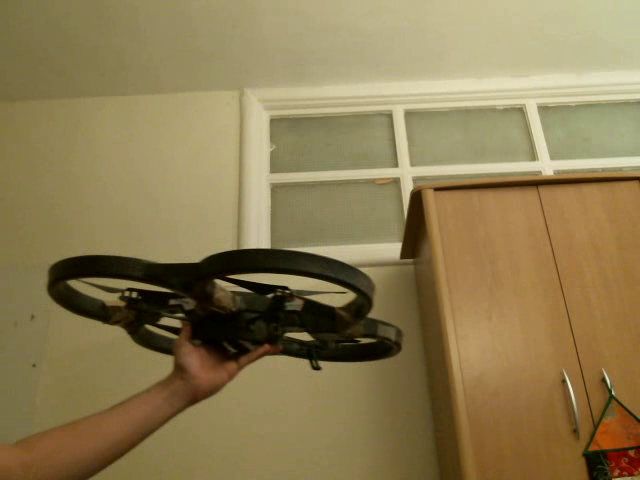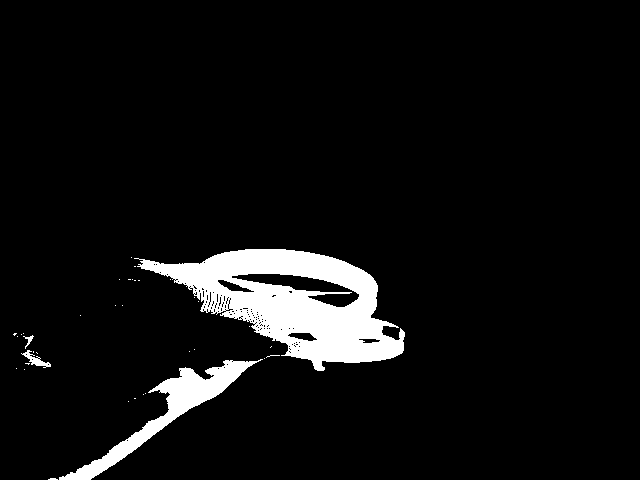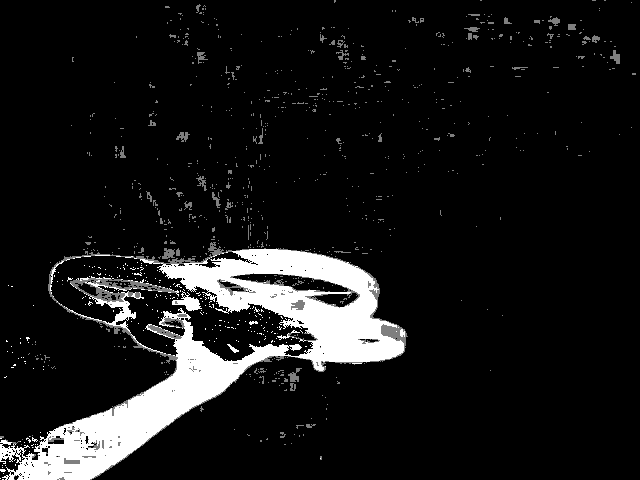Hi,
I have been looking at openCV Background Subtraction methods ( MOG, MOG2, GMG ,etc).
Final Use Case: Detect (using fixed stereo cameras) a moving Parrot A.R. Drone in a indoor/outdoor environment.
What I need to know: Currently I am trying to explore Background Subtraction but openCV gives very poor results. After seeing the images below, I would like to know your opinion/experience on how these can be improved. I can think of a few methods to improve these results ( eg: MOG + dilation to improve results shown below , usage of HSV/LAB color spaces for potential robustness to lighting conditions,etc)
Thanks!!
Original image frame from a video:

Comparison of 3 methods below:
- MOG

- MOG2

- GMG


